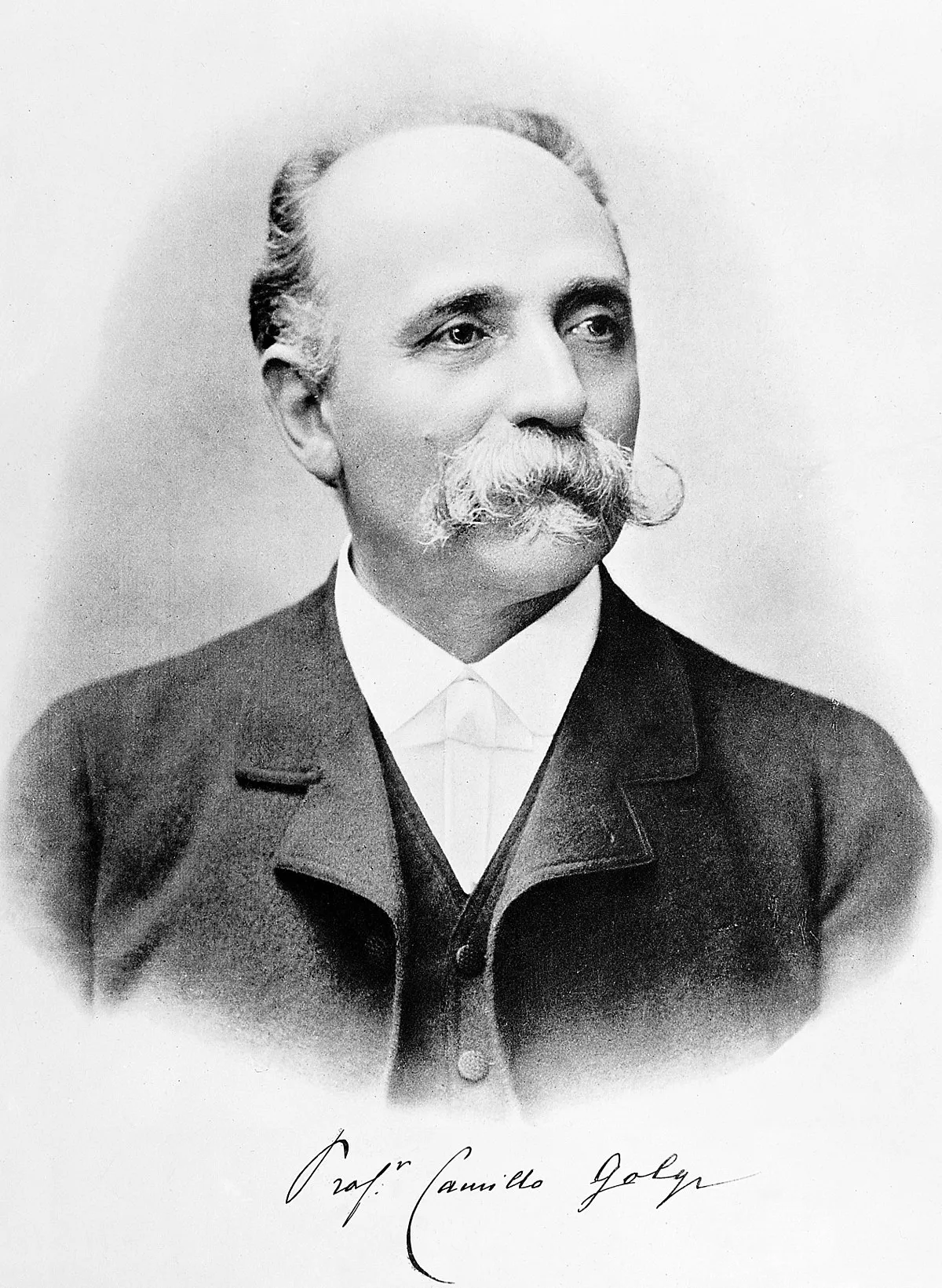 1.
1. Camillo Golgi studied medicine at the University of Pavia between 1860 and 1868 under the tutelage of Cesare Lombroso.

 1.
1. Camillo Golgi studied medicine at the University of Pavia between 1860 and 1868 under the tutelage of Cesare Lombroso.
Camillo Golgi's discovery of a staining technique called black reaction in 1873 was a major breakthrough in neuroscience.
Camillo Golgi's father Alessandro Golgi was a physician and district medical officer, originally from Pavia.
Camillo Golgi did an internship at the San Matteo Hospital.
Camillo Golgi became more interested in experimental medicine, and started attending the Institute of General Pathology headed by Giulio Bizzozero.
The most important research publications of Camillo Golgi were directly or indirectly influenced by Bizzozero.
Camillo Golgi published his major works between 1875 and 1885 in the journal Rivista sperimentale di Freniatria e di medicina legale.
Camillo Golgi served as Rector of the University of Pavia twice, first between 1893 and 1896, and second between 1901 and 1909.
Camillo Golgi retired in 1918 and continued to research in his private laboratory till 1923.
Camillo Golgi was irreligious in his later life and became an agnostic atheist.
Camillo Golgi first treated the tissue with potassium dichromate to harden it, and then with silver nitrate.
Camillo Golgi's discovery was published in the Gazzeta Medica Italiani on 2 August 1873.
Camillo Golgi drew up a new classification of cells on the basis of the structure of their nervous prolongation.
Camillo Golgi described an extremely dense and intricate network, composed of a web of intertwined branches of axons coming from different cell layers.
Camillo Golgi's theory was challenged by Ramon y Cajal, who used the same technique developed by Camillo Golgi.
Camillo Golgi further developed a stain specific for myelin using potassium dichromate and mercuric chloride.
From 1885, Camillo Golgi studied the malarial parasite and its transmission.
Camillo Golgi established two types of malaria, tertian and quartan fevers caused by Plasmodium vivax and Plasmodium malariae respectively.
Camillo Golgi modified his black reaction using osmium dichromate solution with which he stained the nerve cells of the cerebellum of a barn owl.
Camillo Golgi noticed thread-like networks inside the cells and named them apparato reticolare interno.
In 1903, Camillo Golgi was named an honorary member of the American Association for Anatomy.
Camillo Golgi received honorary doctorates from the University of Cambridge, University of Geneva, Kristiania University College, National and Kapodistrian University of Athens, and Paris-Sorbonne University.